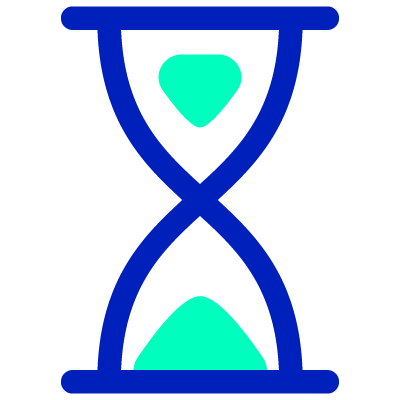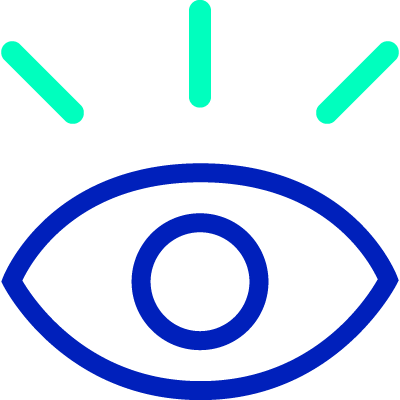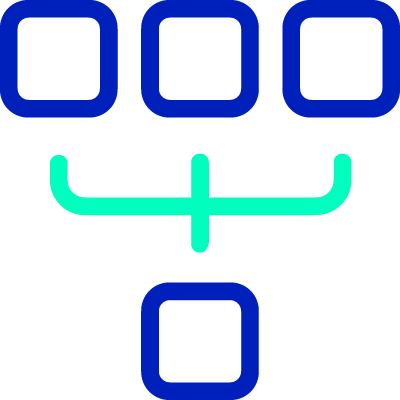Software development has to strike a difficult balance at times. On one hand, there’s the need to create top-quality applications that users love and that are free of bugs and coding errors. But on the other hand, this can take a lot of time, money and highly sought-after developer skill to achieve, and can come with the additional pressure of trying to get new innovations into the marketplace as quickly as possible.
However, low-code and no-code development is making it easier than ever for development teams to get the best of both worlds. Being able to use drag-and-drop interfaces and create applications visually opens up development opportunities to a far wider base of skill sets. It’s no coincidence, therefore, that Gartner reports that up to 70% of new applications will be created using low-code or no-code technologies by 2025.
As the use of low-code and no-code becomes more commonplace, new technologies will have to stand out as differentiators in development. And it increasingly appears that the use of generative AI, especially in creating the bits of detailed code that are still required, will be the way to drive new levels of speed, accuracy and efficiency.
The evolving landscape of low-code, no-code and AI
The growth of generative AI, and artificial intelligence more widely, has been well-documented. All over the world, AI tools are making huge differences to the ways in which people work, and how they interact with different applications and digital services. This ranges from Amazon using AI and predictive analytics for personalized customer purchase recommendations and visual search capabilities, through banks being able to detect fraudulent activity much more quickly, to OpenAI’s ChatGPT allowing even people with limited computing know-how to generate written and visual content with AI.
According to Grand View Research, the value of the global AI market had already reached $196 billion by 2023 - and is expected to grow by an average of 37.3% a year for the rest of the decade. So it’s clear that the applications we use every day, and the development behind them, will be increasingly driven by AI technology in the months and years ahead.
Low-code development platforms, meanwhile, started to emerge at the start of the last decade and have gradually gained traction in development teams worldwide. Part of this has been down to the efficiency, time and accuracy benefits that software companies can gain from it, but there’s a human side to it, too. Top-quality software developers and coders are hard to find, hard to keep hold of and expensive to recruit: using low-code or no-code platforms neatly sidesteps this resourcing issue by eliminating the need for specialist skills in development processes.
Where the two types of technology come together is by generating snippets of code that can expedite the creation of complex applications; supporting better content generation such as reports and documentation; or customizing templates and elements to better serve individual requirements. This integration empowers users with diverse expertise levels to design complex applications by simply describing desired outcomes. For instance, certain platforms now allow users to input requirements in plain language, with the system generating corresponding code or application components. Ultimately, this speeds up development processes significantly, lowers barriers to entry into the software development marketplaces, and fosters a more inclusive environment for creating digital solutions.
GenAI integration: the benefits and risks for development
Because generative AI is so new, all the possibilities of it are still being explored. Naturally, the positives and the key benefits tend to manifest themselves first, because they’re the drivers of adoption. But it’s as the technology gets used by more people over a sustained period of time that the risks start to become apparent. And now that GenAI has become more widely used with low-code and no-code development, it’s become clear that it can be a double-edged sword.
Benefits of GenAI in development
Even in a low-code scenario, where the need for coding is more limited, there are still substantial operational benefits to exploit by using generative AI tools, such as:
 Assisting with time-consuming tasks
Assisting with time-consuming tasks
Using generative AI means that routine coding jobs can be fully automated, which can make development workflows much faster, more efficient, and less vulnerable to mistakes caused by human errors. Crucially, this can also free up the valuable time of skilled developers to focus on areas where GenAI or low-code development platforms aren’t suitable, and a manual approach is needed.
 Supporting inexperienced developers
Supporting inexperienced developers
Generative AI serves as a valuable resource for developers, particularly those in the learning phase. Leveraging GenAI tools for real-time code generation not only saves time but also offers invaluable learning experiences. This efficiency boost not only benefits individual developers but also empowers entire development teams to embrace agility, responsiveness, and innovation in their practices. This integration of GenAI tools fosters an environment where creativity and efficiency thrive, paving the way for groundbreaking applications and services.
 Improving innovation
Improving innovation
By creating code itself, generative AI can give developers a ‘second opinion’ in how to solve any particularly challenging coding tasks, or in how to put more innovative and creative features in place. AI’s capability in this area will only increase over time, as AI tools learn from experience, and expand the coding possibilities that they can refer to.
 Generating cost savings
Generating cost savings
There are substantial savings that can be realized by using generative AI in development, not least through the ability to reuse sections of code that have been utilized in the past, instead of having to rewrite them. GenAI also allows development projects to be successfully completed by smaller teams, and by developers with lower levels of skills and experience. This reduces hiring costs, both in terms of headcount, and in average salary per developer.
Risks of GenAI in dev
New risks in using generative AI for development are emerging all the time. This doesn’t mean that development teams should shy away from using the technology, as the benefits are so great that they can’t be missed out on. Nonetheless, there are a few things in particular to watch out for:
 Reliance on accurate prompts
Reliance on accurate prompts
AI-generated code is only as good as the prompts that are fed into the tools that create it. It’s therefore vital that developers understand how to ask the right questions in the right ways to generate the code they want, and ideally to be able to do so at the first time of asking. If developers can’t ‘talk’ to GenAI tools in the right way, then the time, accuracy and efficiency savings of generating code through AI can be severely undermined.
 Security and privacy within development
Security and privacy within development
There are several issues that could arise with using generative AI from security and privacy standpoints. One is that the databases of existing code that GenAI tools rely on could easily contain vulnerabilities, or patterns of code that can be easily exploited, which then get built into new applications. Another is that AI’s reliance on code that is in the public domain could lead to it using registered intellectual property or copyrighted material, which can lead to legal issues if that code is used in an application after go-live.
 Ongoing maintenance and checks
Ongoing maintenance and checks
AI is not at a stage where it can be relied upon to create code completely autonomously. The code it creates has to be checked for accuracy, to ensure there are no biases within it, and to ensure that it is based on data that is safe and legal to use (as mentioned above). The tools themselves also have to be maintained so that they’re working properly and generating the outputs that they should be. All this takes time and manual resources, which can impinge upon the efficiencies and savings that can be generated.
 Collaboration with other platforms and systems
Collaboration with other platforms and systems
The seamless integration of GenAI with low-code and no-code development platforms facilitates the creation of more sophisticated and efficient applications. This collaboration combines strengths from different technologies, streamlining both application development and deployment processes. By enabling AI-generated code snippets and automation, this not only accelerates development but also broadens the possibilities of achieving significant outcomes with minimal coding. Ultimately, it makes innovation more accessible for businesses striving to maintain competitiveness.

Will GenAI replace low-code and no-code?
In our opinion, the answer is no - at least in the short-term and medium-term. GenAI tools have a place alongside low-code and no-code development platforms, and can actually make the whole development process collectively stronger. Low-code and no-code still makes sense in a lot of areas, such as visual drag-and-drop interfaces and pre-built templates, while GenAI can provide a real helping hand with the more technical and complex jobs that arise along the way. And with testing, maintenance and AI tool oversight still needing the human touch, it’s clear that GenAI can’t be thought of as an entire code creation solution on its own.
What’s next for GenAI and low-code/no-code?
The best way to consider the future of GenAI and low-code/no-code development is that while they’re completely different technologies, their objectives are the same: to make development easier, faster and more efficient. And it’s for that reason that we expect the relationship between the two to become even more closely intertwined in the months and years ahead.
In the longer-term, it’s entirely possible that GenAI will be able to generate entire functions based on queries, rather than just snippets of code within it. That way, developers will be able to achieve another new level of efficiency, by generating applications without any coding, and simply by asking the right questions of an AI tool, in the right way and in the right order.
Soon enough, applications will effectively be able to build themselves, based only on simple descriptions in natural language. In short, tell AI what you want it to make, and it’ll take care of all the architecting, coding and deployment. This will make development cycles much quicker, and break down many of the technical expertise barriers that hold so many organizations back.

It’s because of this potential that we at Ciklum are so excited about the future of generative AI, and why we’re already integrating GenAI into our low-code and no-code development processes. That way, our experts can take your innovative ideas and get them into market faster, and with less difficulty than ever before. Alongside our data analytics solutions, future-proofed innovation and holistic approach to development, we’re your perfect partner for finding extra speed, accuracy and efficiency in your processes.
Blogs





































